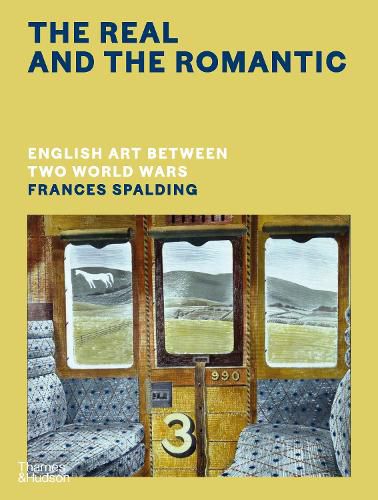Readings Newsletter
Become a Readings Member to make your shopping experience even easier.
Sign in or sign up for free!
You’re not far away from qualifying for FREE standard shipping within Australia
You’ve qualified for FREE standard shipping within Australia
The cart is loading…






‘Superb’ Sunday Times
‘Spalding’s prose is as clear as a Ravilious greenhouse, her thoughts as orderly as a Ben Nicholson white relief’ The Times
A fresh look at a period of English art that has surged in interest and popularity in recent years, authored by one of Britain’s leading art historians and critics.
The 21st century has seen a surge of interest in English art of the interwar years. Women artists, such as Winifred Knights, Frances Hodgkins and Evelyn Dunbar, have come to the fore, while familiar names - Paul Nash, Eric Ravilious and Stanley Spencer - have reached new audiences. High-profile exhibitions have attracted recordbreaking visitor numbers and challenged received opinion. In The Real and the Romantic, Frances Spalding, one of Britain’s leading art historians and critics, takes a fresh and timely look at this rich period in English art.
The devastation of the First World War left the art world decentred and directionless. This book is about its recovery. Spalding explores how exciting new ideas co-existed with a desire for continuity and a renewed interest in the past. We see the challenge to English artists represented by Cezanne and Picasso, and the role played by museums and galleries in this period. Women artists, writers and curators contributed to the emergence of a new avant-garde. The English landscape was revisited in modern terms. The 1930s marked a high point in the history of modernism in Britain, but the mood darkened with the prospect of a return to war. The former advance towards abstraction and internationalism was replaced by a renewed concern with history, place, memory and a sense of belonging. Native traditions were revived in modern terms but in ways that also let in the past. Surrealism further disturbed the ascetic purity of high modernism and fed into the British love of the strange.
Throughout these years, the pursuit of ‘the real’ was set against, and sometimes merged with, an inclination towards the ‘romantic’, as English artists sought to respond to their subjects and their times.
$9.00 standard shipping within Australia
FREE standard shipping within Australia for orders over $100.00
Express & International shipping calculated at checkout
‘Superb’ Sunday Times
‘Spalding’s prose is as clear as a Ravilious greenhouse, her thoughts as orderly as a Ben Nicholson white relief’ The Times
A fresh look at a period of English art that has surged in interest and popularity in recent years, authored by one of Britain’s leading art historians and critics.
The 21st century has seen a surge of interest in English art of the interwar years. Women artists, such as Winifred Knights, Frances Hodgkins and Evelyn Dunbar, have come to the fore, while familiar names - Paul Nash, Eric Ravilious and Stanley Spencer - have reached new audiences. High-profile exhibitions have attracted recordbreaking visitor numbers and challenged received opinion. In The Real and the Romantic, Frances Spalding, one of Britain’s leading art historians and critics, takes a fresh and timely look at this rich period in English art.
The devastation of the First World War left the art world decentred and directionless. This book is about its recovery. Spalding explores how exciting new ideas co-existed with a desire for continuity and a renewed interest in the past. We see the challenge to English artists represented by Cezanne and Picasso, and the role played by museums and galleries in this period. Women artists, writers and curators contributed to the emergence of a new avant-garde. The English landscape was revisited in modern terms. The 1930s marked a high point in the history of modernism in Britain, but the mood darkened with the prospect of a return to war. The former advance towards abstraction and internationalism was replaced by a renewed concern with history, place, memory and a sense of belonging. Native traditions were revived in modern terms but in ways that also let in the past. Surrealism further disturbed the ascetic purity of high modernism and fed into the British love of the strange.
Throughout these years, the pursuit of ‘the real’ was set against, and sometimes merged with, an inclination towards the ‘romantic’, as English artists sought to respond to their subjects and their times.